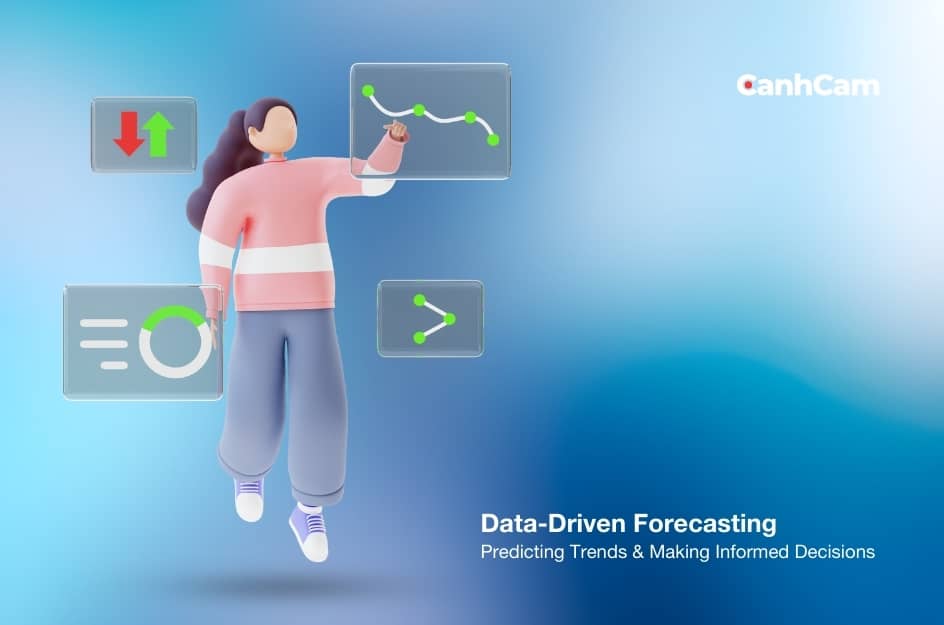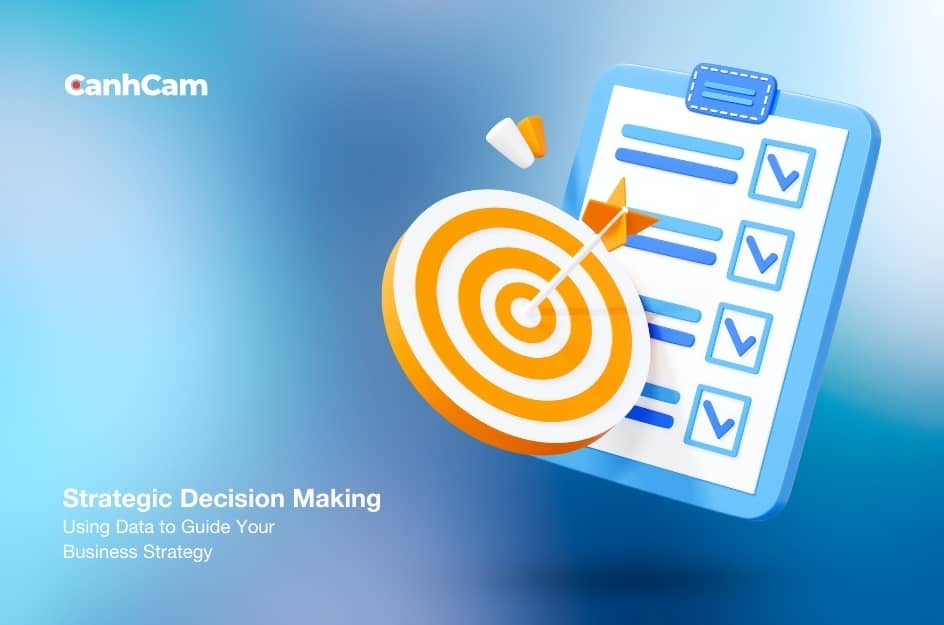In the e-commerce business, the average cart abandonment rate for online purchases exceeds 70%. This poses a big challenge for e-commerce operations. How do you effectively reach customers and get them to complete the purchase? The crucial element: data collection by an e-commerce analytics.
E-commerce businesses must make data-driven decisions to understand customer actions, drive growth, and generate profits. It’s all about collecting the right data, getting granular audience insights, and putting that information to work.
This is where e-commerce analytics comes in handy. With this in mind, the more important question is: What key performance indicators (KPIs) do you need to stay ahead of the race, and what analytics tools can you use to measure?
Our blog post to learn more about applying e-commerce analytics to create more effective campaigns, increase sales, and strengthen your brand position.
What is Ecommerce Analytics?
Ecommerce analytics is any tool or strategy designed to analyze large amounts of data to produce actionable insights. Because it exists in an almost entirely virtual space, e-commerce generates complex and comprehensive data sets, especially those related to customer behaviors.
With a 200% increase in online purchases of essential goods between March 2019 and March 2020, we now have more consumer data than ever before to measure, analyze and dissect. However, finding the right data analytics for retail and e-commerce can give your brand an immeasurable advantage over your online competitors.
Visit our servives: best website designers melbourne

Sales Tracking: Analyzing sales data to identify top-selling products and successful marketing campaigns.
Why are Analytics in Ecommerce Important?
Analytics in Ecommerce industry are important because they can help you get a more complete picture of your store's strengths and weaknesses and knowledge is power. With the right ecommerce data at hand, you can:
- Understand which channels attract the most customers and optimize your marketing budget and investments accordingly.
- Discover the groups of customers who spend the most money and identify the products they buy to target them with personalized offers.
- Identify customers who are least likely to make a second purchase and find out why in order to develop an appropriate customer retention strategy.
It's important to note that you can base all of this information on real data from the platforms you use. Relying on real numbers and facts to make informed business decisions instead of costly guesswork puts you in a much better position. You gain a competitive advantage over online merchants who don't approach ecommerce analytics at the same level of granularity.

Conversion Optimization: Improving conversion rates by analyzing user behavior throughout the sales funnel.
What Does the Data Landscape Encompass?
The ecommerce data landscape encompasses a rich tapestry of information, encompassing audience demographics, customer behavior patterns (behavior analytics), conversion rates (conversion analytics), etc. By leveraging these diverse data points through analytics, you can understand insights into your customer behavior and journey optimization.
Read more: Ecommerce Accountant - Step-By-Step Guide for E-commerce Accounting
This comprehensive understanding empowers data-driven decision-making, ultimately propelling your business growth and success. Are you ready for the next steps? Let's discuss with us:
Audience Analytics:
Your website is a digital storefront, and Audience Analytics allows you to understand who walks through the virtual door. Discovering your audience's demographics, preferences, and behaviors is the first step towards tailoring your online experience to meet their needs.
Acquisition Analytics:
Knowing where your customers come from is pivotal. Acquisition Analytics sheds light on the channels and campaigns driving traffic to your site, allowing you to refine your marketing strategies and allocate resources more effectively.
Behavior Analytics:
Every click, scroll, and hover on your website tells a story. Behavior Analytics decodes these stories, revealing how visitors interact with your site. Understanding these journeys enables you to optimize user experience and enhance conversion rates.
Conversion Analytics:
The journey from a visitor to a customer is a series of critical steps. Conversion Analytics breaks down this process, providing insights into where your customers convert and where they may drop off. This information is invaluable for refining your sales funnel.
Paid Marketing Analytics:
Investing in marketing campaigns is essential, but knowing which campaigns yield the best results is equally crucial. Paid Marketing Analytics helps you evaluate the effectiveness of your advertising efforts, ensuring you get the most value from your marketing budget.

Customer Segmentation: Segmenting customers based on demographics and behavior to personalize marketing efforts.
What Are the Benefits of Customer Insights?
The benefits of Insights are It unearths actionable customer insights that boost marketing & sales efficiency. Imagine targeting your campaigns and a frictionless sales process! These data-driven insights also guide informed decisions shaping your future success.
Understanding customer behavior and trends allows you to strategically develop products, manage inventory, and allocate resources, keeping your online store ahead of the curve let's explore some key benefits:
Attract more customers:
One of the main benefits of using customer Insights is that it allows you to attract and engage more customers from your target audience. By implementing historical and real-time data, you have the ability to analyze customer data and behavior while integrating this information into your e-commerce site, including customer purchase history.
By implementing this strategy, you will understand this customer's purchasing potential in the future and how to encourage them to take the plunge.
You can create sales and marketing strategies to increase the loyalty of your current customers while improving your conversion rates with prospects. That can give you the insights you need to provide your customers with more personalized messages and better results.
Increases profitability:
Of course, the main goal of implementing customer Insights is to better understand customer behavior and improve their experience with your brand; The ultimate goal of any brand is to make money!
Generally speaking, companies that implement customer Insights strategies tend to increase their productivity significantly, with more effective marketing and sales strategies leading to higher returns.
Improved customer knowledge: is great at producing data that shows you critical customer insights that you can leverage for more success.
For example, you have the power to collect data from your social media posts about what your customers want to see from your brand. Social media is also a way to uncover unresolved issues or ongoing complaints your customers might have.
You can use this data to create products or services tailored to your customers' needs and personalized solutions to problems that suit your current and future audiences.
Improves customer loyalty
Customer loyalty is one of the essential aspects of the success of any business. Without repeat purchases, growth quickly stops.
Data allows you to understand how to encourage more customers to make repeat purchases by promoting products and services at the optimal time, increasing your chances of retaining customers.
How to collect customer Insights data
You need intelligent data to create lasting customer relationships that increase revenue and customer lifetime value. There are several ways to collect customer insight data to improve customer journeys and engagement.
Interviews
One of the most important things you need to understand about your business is the customer journey and customer experience. To get the most information about your customers, consider conducting interviews.
Interviews are great for customer engagement and help you understand them better.
Investigations
There's a reason market research has been popular for so long. This is one of the best ways to ask your current customers or target audience about their experience with your brand and how you can improve their interactions with your brand.
Marketing surveys can be used by sales, distribution, marketing or customer service teams.
Customer Relationship Management (CRM)
CRM is the term used to define the database in which you store all your customer data. It is important for any brand to fully understand its customer base, as this will allow it to better target and segment its marketing campaigns and improve sales efficiency.
Loyalty is at the heart of any successful business, and customer Insights allows brands to know which marketing campaigns are resonating with customers and which should be scrapped.

Website Performance Monitoring: Monitoring website metrics like load times and bounce rates to enhance user experience.
Support client
A customer support platform can help brands store essential customer feedback from various channels, such as emails, phone calls, live chat, or social media.
This collected data can then be used to implement changes that allow customers to repurchase your products or encourage new prospects to try them.
Website behavioral data
Tracking and collecting website behavioral data provides an extremely accurate way to understand customer needs. Analyzing site behavioral data allows you to understand potential bottlenecks on your site that are preventing you from improving conversion rates.
For many big brands, website behavioral data is considered a goldmine as it allows them to run various tests to understand the most effective version of your online store. These tests allow you to understand the behavioral trends and motivations of your customers and create a website that meets these requirements.
No matter what method you use to collect customer data, all information obtained should be used to build useful reports. Data collection is a necessary step for any brand to establish future actions. Consider adding daily or weekly reports to manage data collected from different customer segments.
Metrics vs. KPIs vs. Analytics vs. Reporting: Clarifying Key Terms
Understanding the distinctions between metrics, KPIs, analytics, and reporting is essential for a nuanced comprehension of Ecommerce Analytics. Each plays a unique role in evaluating different aspects of your online business.
Common Challenges & Solutions: Overcoming Hurdles in Ecommerce Analytics
Even with advanced analytics tools, challenges may arise. From data quality issues to interpretation hurdles, this section addresses common challenges and provides practical solutions to ensure a smooth analytical journey.
Tools & Platforms: Choosing the Right Analytics Tools for Your Business
The market is flooded with analytics tools, each offering unique features. Choosing the right tools that align with your business goals and resources is crucial for a successful analytics strategy.
The Future of Analytics: Emerging Trends and Their Impact
As technology advances, so does the landscape of analytics. Explore the emerging trends shaping the future of Ecommerce Analytics and understand how staying ahead of these trends can give your business a competitive edge.

Inventory Management: Using analytics to optimize inventory levels and ensure popular products are always available.
Implementation Tips
- Regularly review and adjust your analytics approach to stay aligned with changing market dynamics.
- Use insights to refine marketing strategies, enhance user experiences, and optimize pricing and inventory.
- Foster a culture of data-driven decision-making within your organization to maximize the impact of analytics.
Conclusion
Ecommerce Analytics isn't just about collecting data; it's about turning that data into actionable strategies that drive success. As we wrap up our exploration, let's recap the key takeaways and delve into practical tips for implementation.
Frequently Asked Questions (FAQs)
1. Which ecommerce analytics tool is the best and why?
Among the most popular data analytics tools for ecommerce websites is Google Analytics. It provides a vast range of practical and free-to-use solutions, thus, being a good point for any ecommerce business to start from.
2. Why use Google Analytics for ecommerce?
Google Analytics will provide us with invaluable insights into our ecommerce performance and will enable us to focus on the areas that require improvement. It can track your ecommerce conversion rate, determine your revenue, analyze product performance, monitor shopping behavior, evaluate marketing campaigns, and utilize data effectively.

